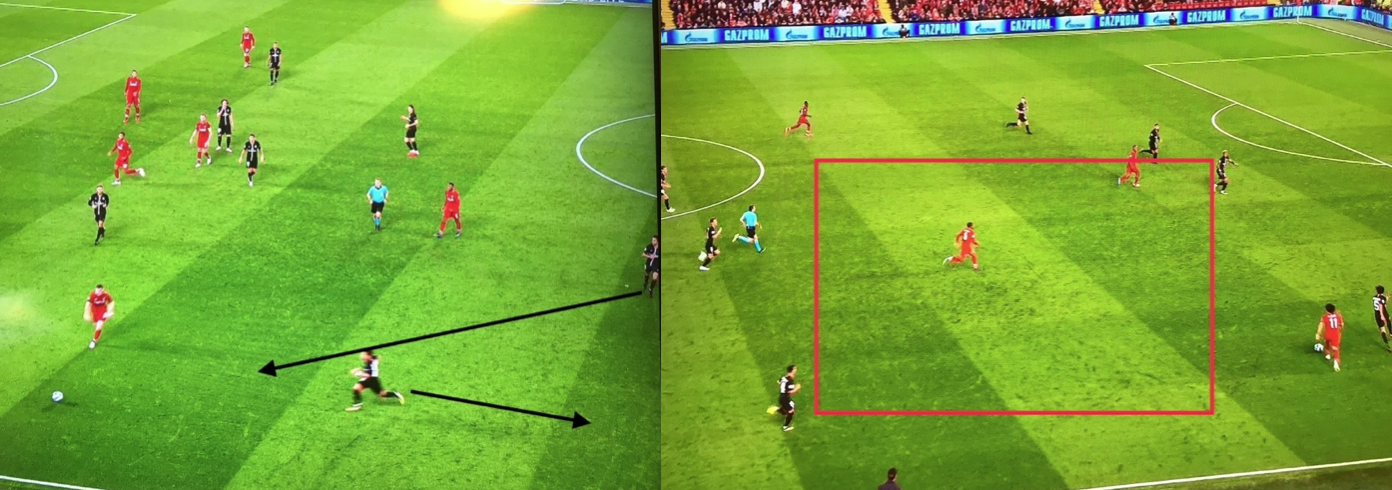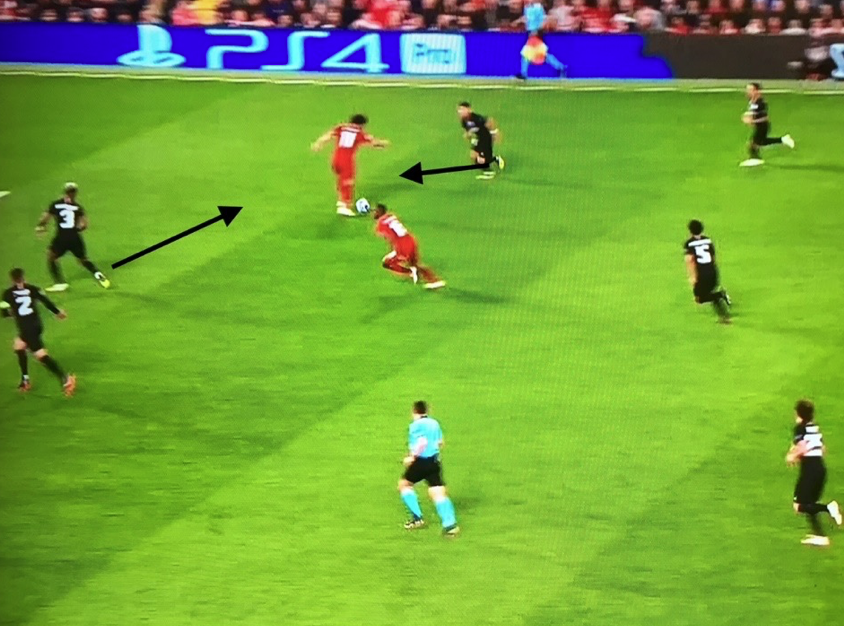Liverpool gave Anfield another of its magical European nights with a memorable 3-2 victory over PSG under the lights, who suffered the same fate as many teams before them.
First Half
Liverpool dominated the first 30 minutes of play with PSG happy to sit back and absorb pressure in an attempt to nullify the atmosphere. PSG sat off Liverpool, not pressing from the front and left at least 2 of their front three forward, while the other 8 players defended in 2 rigid lines. As soon as they got in possession of the ball, PSG looked to push their front three on while the midfield continued to sit deeper. The front three looked dangerous at times due to the quality of the players within it, however they didn’t cause Liverpool too many problems. So why didn’t PSG push their midfield further up?
PSG attempted to attack with only their front three to limit the danger Liverpool pose in transitions. Liverpool thrive in areas of transition and space, so PSG simply let the front three attack on their own while the midfield and defence sat in shape ready if they were to lose the ball. This approach seemed to work well for PSG initially with Liverpool not getting many dangerous transitions or chances and having no opportunity to sprint into space and exploit a lack of numbers.
On the ball PSG tried to exploit the wide areas to avoid Liverpool’s press, but again the work rate of the midfield and forwards didn’t allow this to happen, with PSG finding no luck in the wide areas, either being pressed into going backwards or losing a 1v1 battle with the full backs. This meant they started using the central areas more, which is where Liverpool try to lure the teams they play, as it is much easier to press a player in the middle of the pitch than one who is wide.
Players in the centre of the pitch can be surrounded and pressed from multiple different angles, most of which the player in possession can’t see. This makes it much more likely to win the ball back, as passing lanes can be more easily blocked and players can be surrounded, as seen below. When players are out wide, they can usually only be pressed from directions that they can see, thus making it much harder to win the ball back. Therefore, Liverpool always try to block the passing lanes out to the wide areas and leave the ones into the centre of the pitch open, as when it is played into the centre, the player can trigger a pressing trap.

Liverpool eventually found a breakthrough for all of their pressure through Daniel Sturridge, after Andy Robertson found acres of space out wide and delivered an inch perfect ball into Sturridge for a well-deserved goal.
Once the first goal went in, PSG’s midfield seemed to wake up and become much less negative. They pressed and went forward with the ball much more often and this of course gave Liverpool more space in transition, which is where Liverpool’s second goal came from.
PSG lost the ball midway through Liverpool’s half, with their midfield pushed high and Milner raced to the ball ahead of Bernat, who upon not winning the ball was badly out of position. This left space for Mo Salah to exploit the space behind the full back, and he drove at the defence. Marquinhos should be the man to step out to deal with Milner rather than Bernat, who has no chance of getting to the ball first and consequently gives away a penalty. If he stays in position and lets Marquinhos deal with it, the PSG defence would be in a decent shape to defend against the fast break. Marquinhos’ inexperience in midfield showed on multiple occasions, not least here, where a regular central midfield player would press Milner and get back in shape.
With Liverpool thriving in areas of transition, Gini Wijnaldum sprinted forward when he saw the opportunity, completely untracked by any of PSG’s midfield, eventually being clumsily brought down by Juan Bernat who took 20 seconds to track back into what was a nearly credible position. A horror show from PSG that Liverpool took advantage of well.

After the second goal PSG’s midfield continued to push forward which eventually paid off for them when Thomas Meunier scored to make it 2-1 before the break. The goal was however offside, and a foul should have been given earlier for a foul on Alexander Arnold from Cavani.
Second half
The second half started much like the first, with Liverpool dominating possession and penning a compact PSG side into their own half. Liverpool struggled to break the French champions down with the most common ball being into Mo Salah, who often occupied the space between the full back and centre back, which made it difficult for PSG to man mark him. Salah however had a fairly poor game and didn’t create much, which is probably why Liverpool struggled to create so much.
They did however limit PSG’s chances well and made a point of staying tight on Neymar to not allow him space to run, which stifled him well. But for all the pressure, Liverpool couldn’t find a goal and so rather predictably, with PSG leaving their front three forward more and more, they equalised. Liverpool regained possession well from Neymar and looked to push forward in transition. Mo Salah however gave the ball away, allowing Neymar to drive directly at the defence due to the midfield getting ready to push forward. The defence continued to drop and was punished by the quality of Mbappe and Neymar, and it looked as if Liverpool had thrown the game away.

Arise Sir Bobby.
I have just about recovered from the celebrations as Firmino somehow created a shooting opportunity and tucked it away right in front of me in the Anfield Road End. Firmino showed excellent trickery and guile to get a shot off, but PSG looked lacklustre in their defending and were punished brilliantly in a game that they could have eventually won if Draxler had finished his chance. They wouldn’t have even nearly deserved it though.
Man of the match: James Milner (3x in a row!)
Cam Meighan
Latest posts by Cam Meighan (see all)
- Fine margins: Manchester City v Liverpool tactical analysis - January 5, 2019
- Liverpool vs PSG: Tactical analysis - September 19, 2018
- Tottenham vs Liverpool: Tactical Analysis - September 16, 2018
